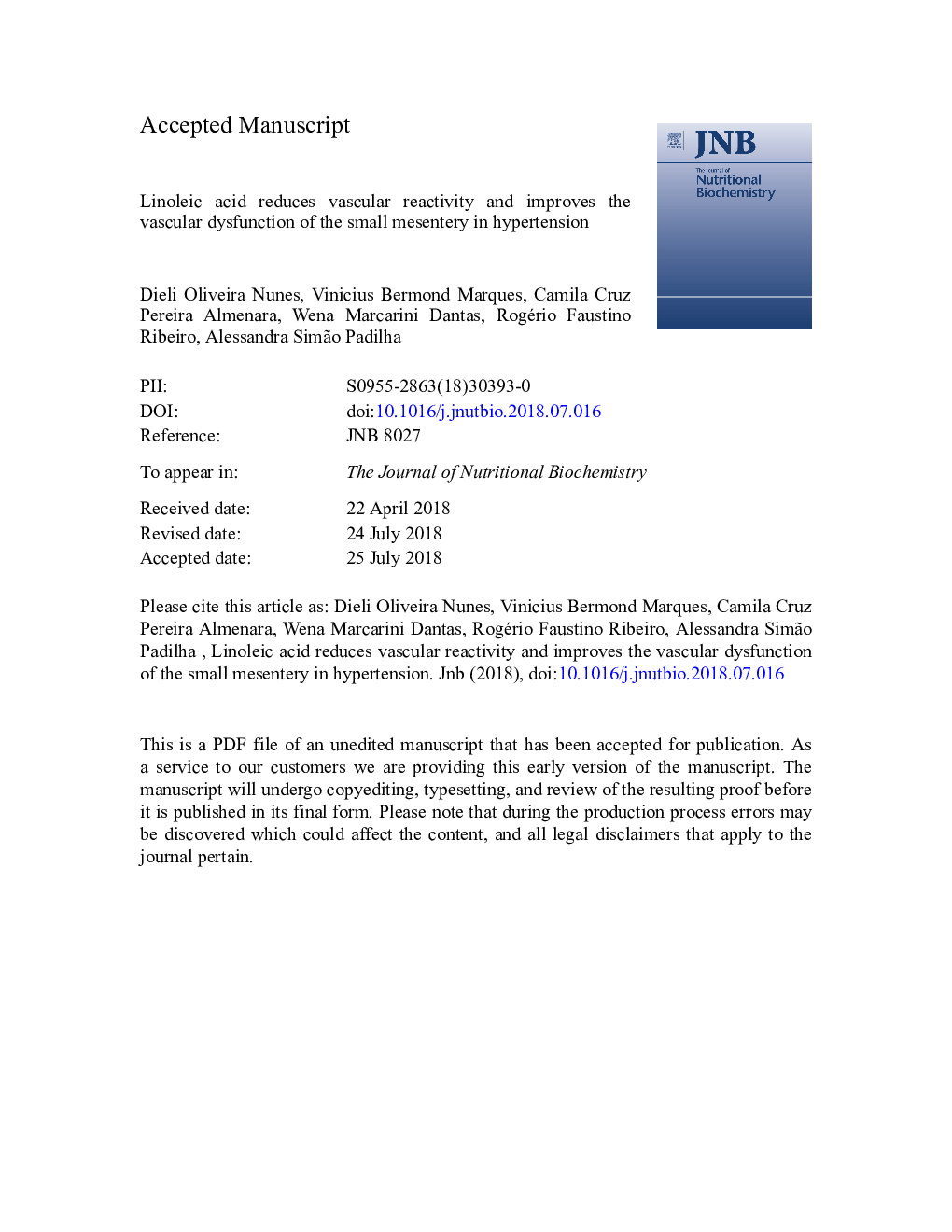| Article ID | Journal | Published Year | Pages | File Type |
|---|---|---|---|---|
| 9954182 | The Journal of Nutritional Biochemistry | 2018 | 35 Pages |
Abstract
We aimed to investigate the effect of linoleic acid (LA) treatment on the blood pressure and function of mesenteric resistance arteries (MRA) in spontaneous hypertensive rats (SHR). Male SHR were treated daily with LA (15 mg/kg) or vehicle (control) for 15 days. Compared with controls, LA treatment decreased blood pressure and showed the following in MRA: (1) increased lumen and external diameter, (2) decreased wall:lumen ratio and wall thickness, (3) decreased stiffness and (4) less collagen deposition. LA treatment reduced the contractile response to phenylephrine, although there were no changes observed in MRA in regard to the acetylcholine or sodium nitroprusside responses. Incubation with L-NAME left-shifted the reactivity to phenylephrine only in the MRA treated group, suggesting that LA treatment can improve NO bioavailability. This result was accompanied by an increase “in situ” NO production. Incubation with tiron decreased vascular reactivity to phenylephrine in MRA in LA rats, which was accompanied by decreased superoxide anion production. Moreover, incubation with indomethacin (non-selective COX inhibitor, 10 μM), NS 398 (COX-2 specific inhibitor, 1 μM), furegrelate (TXA2 synthase inhibitor, 1 μM), SQ 29.548 (TP receptor antagonist, 1 μM) and SC 19220 (EP1 receptor antagonist, 10 μM) reduced the vasoconstrictor responses to phenylephrine in MRA in the treated group. These results were accompanied by a reduction in COX-2 protein expression. In conclusion, these findings show that LA treatment decreases blood pressure. In addition, the improvement of endothelial dysfunction and structural changes in this hypertension model may be responsible for the reduction in blood pressure.
Keywords
Related Topics
Life Sciences
Biochemistry, Genetics and Molecular Biology
Biochemistry
Authors
Dieli Oliveira Nunes, Vinicius Bermond Marques, Camila Cruz Pereira Almenara, Wena Dantas Marcarini, Rogério Faustino Ribeiro Júnior, Alessandra Simão Padilha,
